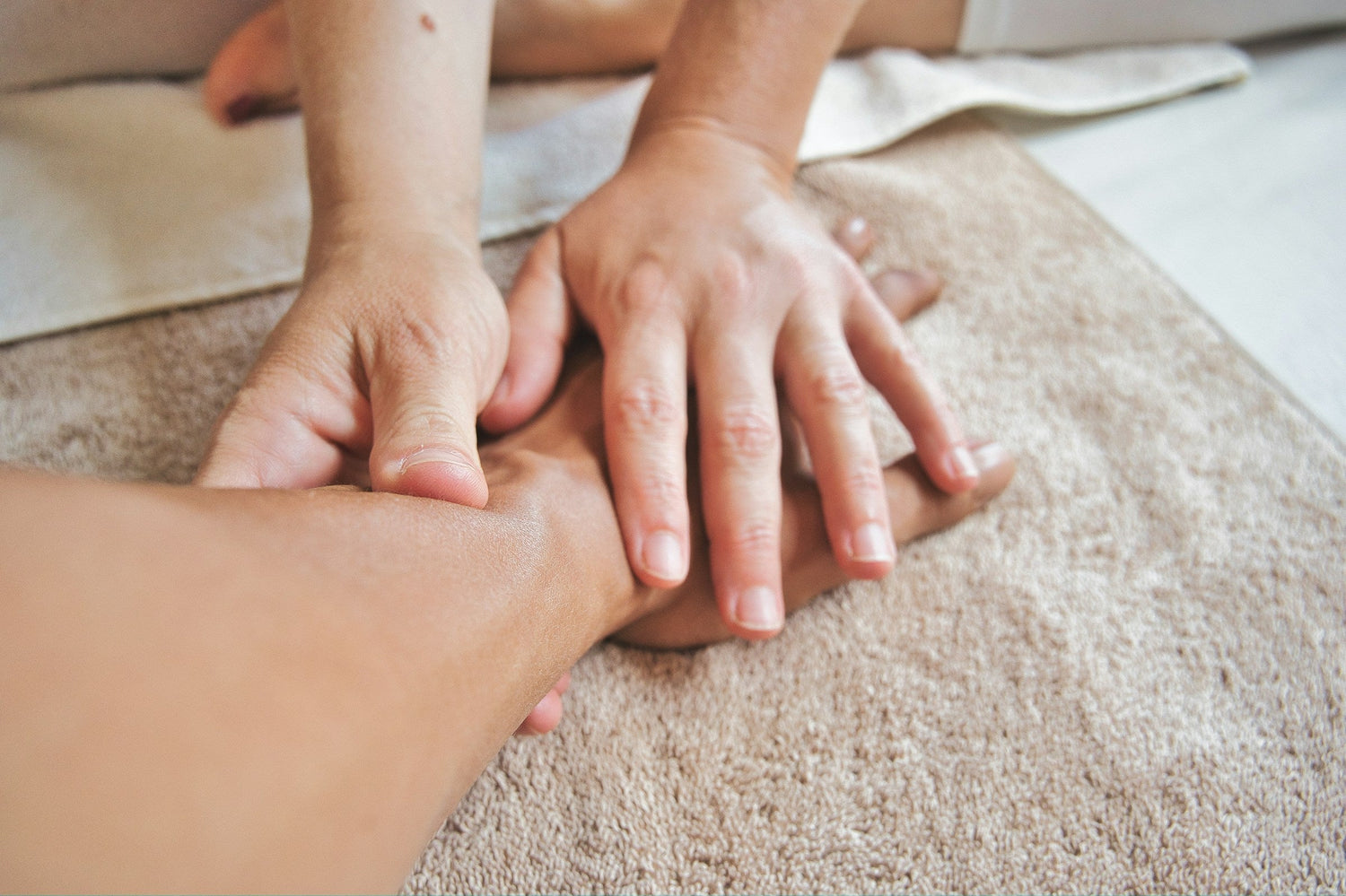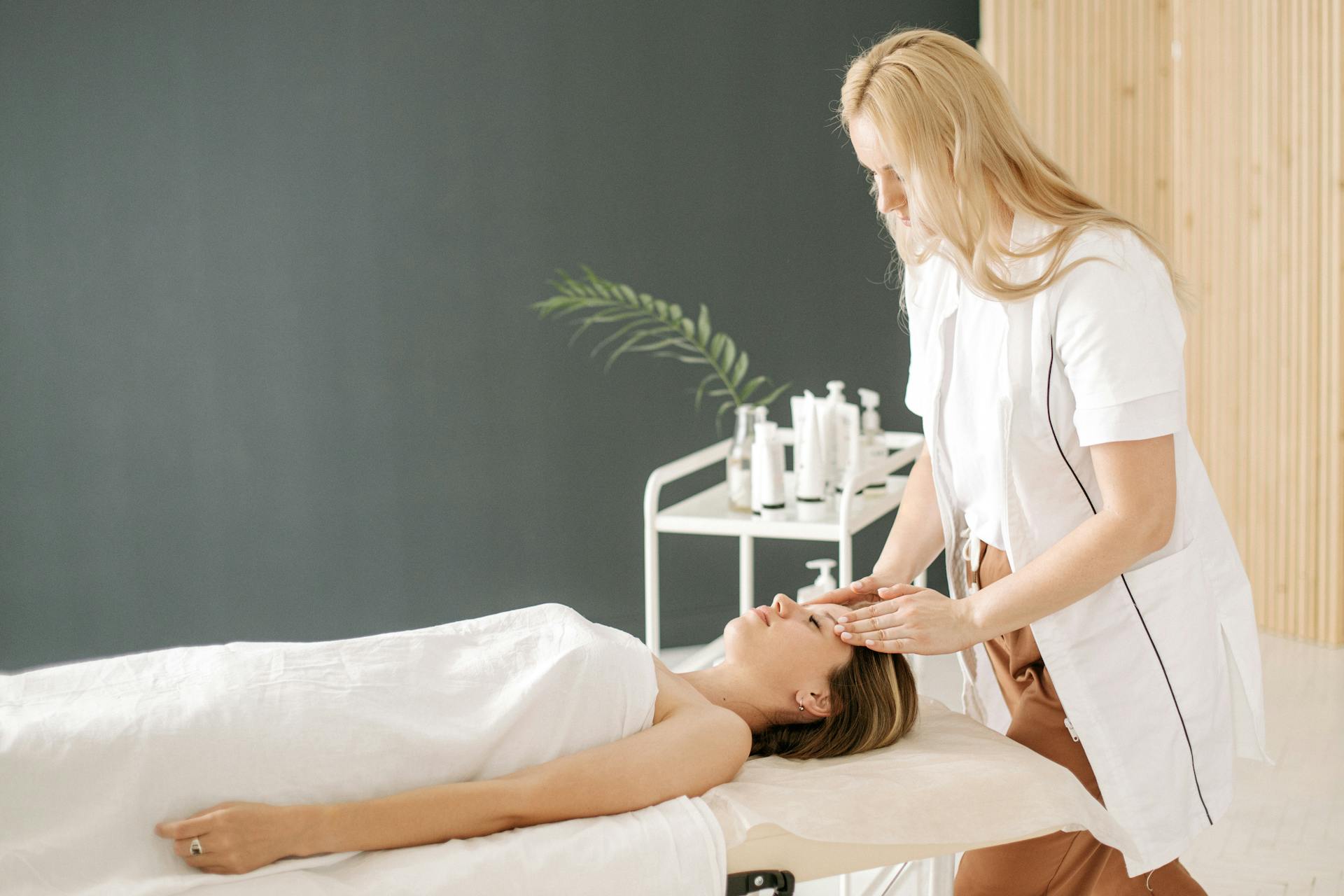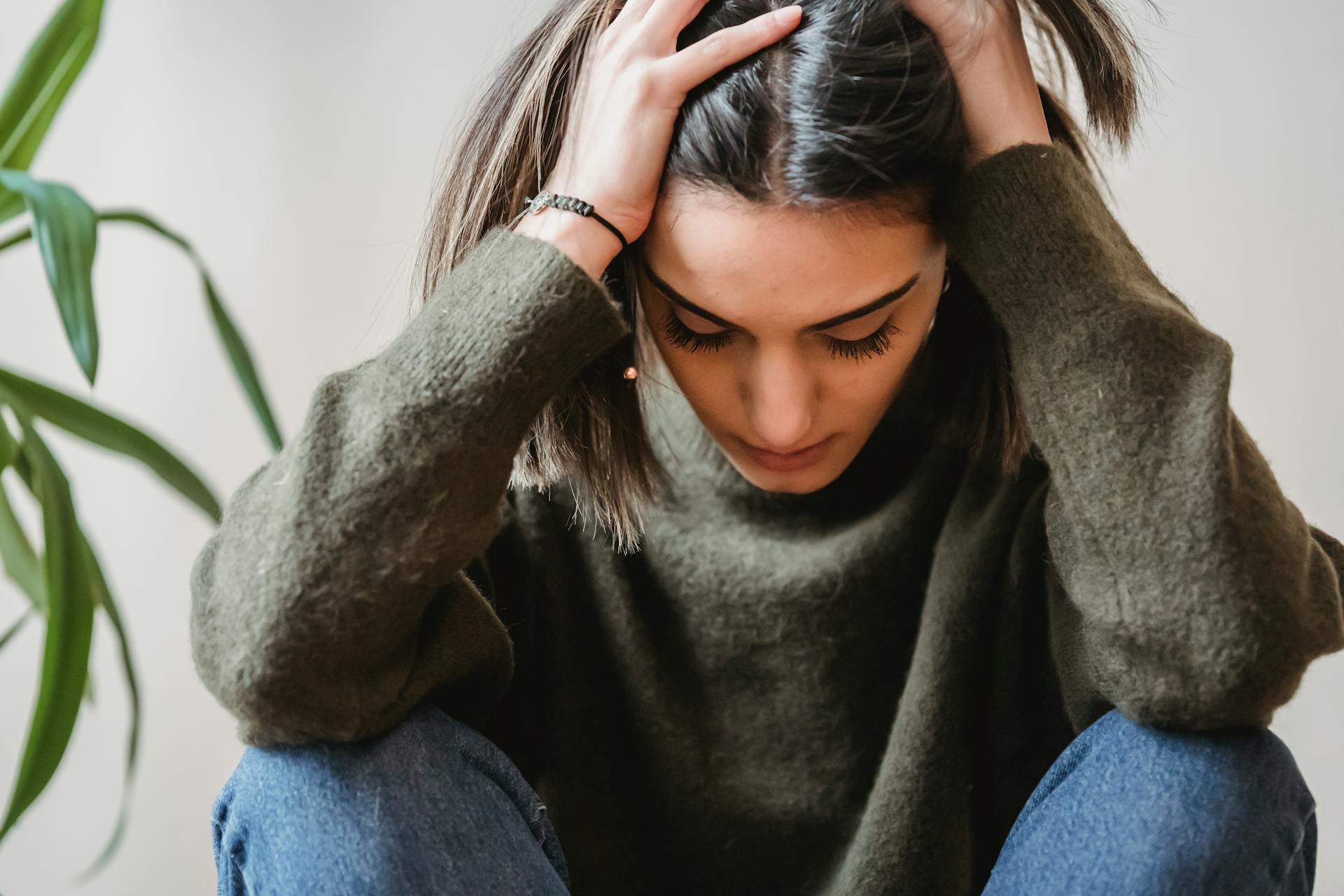When you have stress around work, relationships, or your health, feelings of anxiety come hand-in-hand. Occasional anxiety is a normal part of everyday life; it’s our body’s natural way of helping us respond to problems or danger. But when feelings of anxiety happen all of the time, it can manifest as an anxiety disorder — something that affects 31.3% of US adults at some point in their lives.
Whether you have occasional anxiety spells or more persistent feelings of worry, you might wonder, “Can massage help with anxiety?” Here’s what to know about the potential benefits of massage for anxiety, plus the research and how to get started.
The Benefits of Massage for Anxiety and Stress Relief
Massage involves using touch, kneading, or vibration to put the body in a state of relaxation. And if you’ve ever fallen asleep during a massage, then you know just how powerful it can be.
But can massage help with anxiety? For many people, yes — and it may be thanks to a few major benefits:
The Relaxation Response
Massage can trigger the body’s parasympathetic nervous system, leading to a drop in stress and a boost in physical relaxation. As the tension in your body decreases, you may even experience a short-term drop in blood pressure as part of your body’s relaxation response.
Other effects of the relaxation response include slower breathing and a calmer heart rate — both of which may help offset physical feelings of anxiety. And if you’re receiving an in-person massage from a therapist or partner, the power of touch can add to these benefits. Past research has shown that touch can be helpful for:
- Easing feelings of depression and anxiety
- Improving mental well-being
- Relieving physical pain
Muscle Tension
When you’re in a state of heightened anxiety or fear, your body tenses up as a way to prepare for danger. But in the long term, too much tension can lead to chronic pain, especially in areas like the upper back, trapezius muscles, and neck.
The good news is that massage can help stretch and relax muscles that are “locked” in a position of tension. Trigger point therapy — a deeper, more focused type of massage — can also help break up knots that may have formed in the muscles over time.
Sleep and Insomnia
If you have anxiety often, you might know that it can get in the way of a good night’s sleep. In fact, insomnia — or the inability to fall asleep — is often directly linked to anxiety and stress. Fortunately, because massage can help your body relax, it can also help support you in falling and staying asleep.
This is another side effect of the relaxation response, and it’s why falling asleep during massages is so common. But aside from the physical effects, there’s a mental component, too. Because massage can help you focus on the present moment, it can make it easier for you to shift your mind away from worries and fall asleep more comfortably.
Pain Relief
Pain and anxiety can often happen together — and when they do, they can work cyclically to exacerbate each other. For example, if you live with chronic pain, you might know that it can make anxiety worse. And in contrast, having anxiety while you’re in pain can make your pain feel more intense.
Thankfully, massage may help ease many types of pain, whether it’s tension-related back pain, tendonitis, or all-over pain from certain conditions. It does this by activating the pressure receptors in the muscles, which can help calm pain signals for in-the-moment relief.
Research on Massage and Anxiety
Overall, massage appears to have potential for easing anxiety. And this is why, over the past few decades, researchers have been looking into its effects on specific groups and their symptoms. Many studies have been promising so far — so much so that it is the official position of the American Massage Therapy Association (AMTA) that massage can “assist in reducing the symptoms of anxiety.”
With that in mind, here are a few interesting studies on massage and anxiety:
Perioperative (Surgery-Related) Anxiety
If you’ve ever had surgery, you might have felt a lot of anxiety in the days leading up to it. In a 2020 review of studies, researchers looked at 25 trials involving 2,494 participants to see if massage could help with surgery-related anxiety. They found that massage eased anxiety in a wide range of patients receiving different types of surgery.
Beyond that, the results showed that massages from professional therapists and non-professionals were both effective. The study also notes that massages around 10–20 minutes long seemed to have the best results.
Generalized Anxiety Disorder
In a small 2010 randomized trial, researchers compared three types of relaxation therapies on 68 people with generalized anxiety disorder (GAD). The therapies included:
- Therapeutic massage
- Thermotherapy (or heat therapy)
- Relaxing room therapy
Each group had ten sessions of their assigned therapy over 12 weeks. Interestingly, the results showed that all three interventions led to similar improvements, likely due to the body’s natural relaxation response.
Back Pain and Anxiety
Back pain and anxiety are both very common, and they frequently show up together. In a 2007 study, researchers looked at massage versus relaxation therapy to see how they each would impact low back pain. The participants in the massage group each got a 30-minute massage twice a week for five weeks.
At the end of the study, the massage group reported less pain, anxiety, and depression, as well as better sleep, compared to the relaxation group.
Acupressure for Anxiety
If you’ve ever pressed on a foot or hand pressure point to relieve a headache, you might know about acupressure. This ancient Chinese practice uses the same principles as acupuncture — where practitioners focus on stimulating energy points throughout the body to relieve symptoms and promote health. In a 2022 review of 27 studies, researchers found that the practice of acupressure appeared to improve patient anxiety levels.
What Is the Best Type of Massage for Anxiety?

The best type of massage for anxiety can vary from person to person, but some of the most popular options include:
Swedish Massage
Swedish massage is a great choice for people with stress and anxiety, since it involves light, relaxing strokes. It aims to revitalize and relax the body, improve circulation, and ease pain. It may also involve techniques to support your body’s lymphatic system.
Because its pressure is so gentle, it can be the best choice for those whose main goal is relaxation. It also doesn’t have those “hurts-so-good” sensations that you might get with deeper pressure massage. Instead, it uses a combination of light gliding, kneading, and tapping to promote whole-body well-being.
Aromatherapy Massage
Aromatherapy massage can be done with a wide variety of techniques — whether you prefer light pressure or something a little deeper. The only difference is the inclusion of essential oils into the session. This means it’s easy to add aromatherapy to home massage, and most massage clinics also offer it as an option.
So, why is it a good choice for anxiety? Simply put, certain scents may have the ability to calm the nervous system. In turn, they can work synergistically with massage to deepen the relaxation you get from your session. The best scents for anxiety relief include:
- Lavender
- Chamomile
- Ylang-ylang
- Rose
- Lemon
Self-Massage
Self-massage can be another great tool, even though it might not be “better” than a massage from a professional. However, it does have a leg up over professional massage in one way: it can be done at nearly any time when you could use some stress relief.
You could try it in a simple way — like by giving yourself a foot rub that focuses on pressure points for stress and anxiety. But you could also invest in a foam roller or home massage tool to make daily self-massage easier.
Temple, Neck, and Shoulder Self-Massage for Anxiety
If all you have at home is your hands, you can use this simple upper body self-massage whenever you need some relief. To get started, you’ll want to find a comfortable seat, and ensure that your posture is relaxed yet supported.
Then, simply follow these steps:
- Take a deep breath in, and use both hands to start massaging the sides of your head and scalp in circular motions. Repeat for 1–2 minutes.
- Then, use a few fingers from each hand to massage the temples in circular motions. Repeat for a minute more.
- Next, move down to the masseter muscle. (This is the large muscle just below your cheekbone that controls your jaw.) Massage in circular motions for another minute.
- Now, you’ll move down to the neck. Use sweeping motions with light pressure to massage downward on either side of the back of your neck, starting just under the skull. Repeat 10 times.
- Finally, spend some time massaging each trapezius muscle. This is the muscle on your back between your neck and shoulder, and it can carry a lot of anxiety-related tension. Use your thumb and fingers to pinch and knead each trapezius muscle for 60 seconds.
Self-Foot Massage With Pressure Point
Self-foot massage can be another soothing tool to try — not just for anxiety, but also for giving an often-underlooked part of your body some TLC. This massage requires just five minutes to melt away foot tension while targeting specific pressure points for anxiety relief:
- Start by crossing one foot over your knee. Optionally, apply a drop of oil or lotion to the foot to reduce friction.
- Begin by gliding both thumbs up the length of the foot. Repeat for two minutes.
- Then, use your knuckles to repeat the gliding motion for one minute.
- Next, squeeze and pull each of your toes for a few seconds.
- Finally, press on the great surge pressure point for some extra stress relief. This pressure point is on top of your foot, about one-to-two inches down in the space between your big and middle toes. Press and hold this pressure point for 4–5 seconds.
Massage for Anxiety Best Practices
Whether you opt for professional massage or self-massage at home, here are a few tips and best practices to keep in mind:
- Practice mindfulness or deep breathing during your massage. Both of these techniques can work synergistically to help move your body and mind into a state of calm.
- Use massage regularly. By making massage a regular part of your self-care, you’ll have another option in your anxiety toolkit. Plus, the effects of massage only last a short while, so using it often can help you reap the benefits long-term.
- Pay attention to your body’s response. This is especially important if you’re trying deep pressure for the first time, or if you have pain in some part of your body. Being mindful of your body’s response can ensure you don’t use techniques that worsen your pain or anxiety.
- Try different therapists or massage modalities until you find one that feels best for you.
- Remember to hydrate after each session.
- Don’t be afraid to communicate your needs and concerns if working with a therapist.
Are There Any Risks or Side Effects of Massage for Anxiety?
Massage is helpful and relaxing for most people as long as it’s done properly. But there are certain health issues that might mean you’re not a good candidate for massage (although these are often unrelated to anxiety).
In general, you’ll want to check with your doctor if you have any skin issues or current injuries on your body. It’s also important to get the OK if you have a heart condition, kidney issues, organ failure, osteoporosis, or a history of blood clots.
Overall, each person’s health and sensitivities are different. So, if you’re ever unsure about a health condition or medication you’re taking, it’s always best to check with your doctor before starting.
Getting Help for Anxiety Disorders
Massage can be a natural way to calm yourself down when feelings of anxiety spike. However, it’s not a treatment or cure for anxiety disorders. When you have anxiety that impacts your daily life, causes physical symptoms, or makes it hard for you to function, it’s important to get in touch with a doctor or licensed mental health professional.
Anxiety disorders can feel debilitating, but the good news is that they are very treatable with the right tools — even if it takes some time to find the best ones for you. The main treatment options typically include:
- Therapies like cognitive behavioral therapy (CBT), talk therapy, or exposure therapy
- Medications to treat underlying issues or imbalances that may be triggering anxiety
Other Tools and Tips for Managing Anxiety
Along with massage and prescribed treatments, here are a few more tools that have been shown to have positive effects for people with anxiety:
Exercise
According to an article by Harvard Health Publishing, past studies have shown that people with anxiety tend to exercise less than others. But from that same article, the author writes that exercise “may be the single best nonmedical solution we have for treating and preventing anxiety.”
This is likely due to the slew of benefits — both mental and physical — that exercise gives our bodies. Aerobic exercise like jogging or biking can be the most helpful. But if that isn’t your jam, any type of exercise from weightlifting to yoga could also boost your mental well-being.
Diet and Nutrition
Beyond exercising, a healthy diet could also be linked to lower levels of anxiety. For example, getting enough minerals like magnesium and zinc could help you stay calmer naturally. And foods rich in omega-3 fatty acids like salmon or tuna could also be beneficial.
In addition to those, here are a few more foods that could make a positive impact on your mood and anxiety levels:
- Probiotic-rich foods like sauerkraut, yogurt, kimchi, or kombucha
- B-vitamin-rich foods like almonds, asparagus, and eggs
- Antioxidant-rich options like colorful fruits, berries, nuts, and beans
- Vegetables such as kale, cabbage, and artichoke
The Takeaway
If you live with anxiety, you may already have a few regular self-care tools that you use to manage it. But along with any prescribed treatments, massage therapy can act as another natural way to calm your body, ease tension, and provide some much-needed stress relief.
Swedish massage tends to be a good option to start with for those new to professional massage. But if you want to add massage to your daily routine, you can use self-massage techniques like the ones covered above — or invest in a physician-trusted tool like those from MedMassager.
Pick up the MedMassager Body Massager Plus to get started, or view the full line of home tools today.



